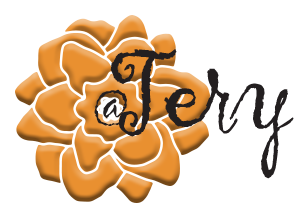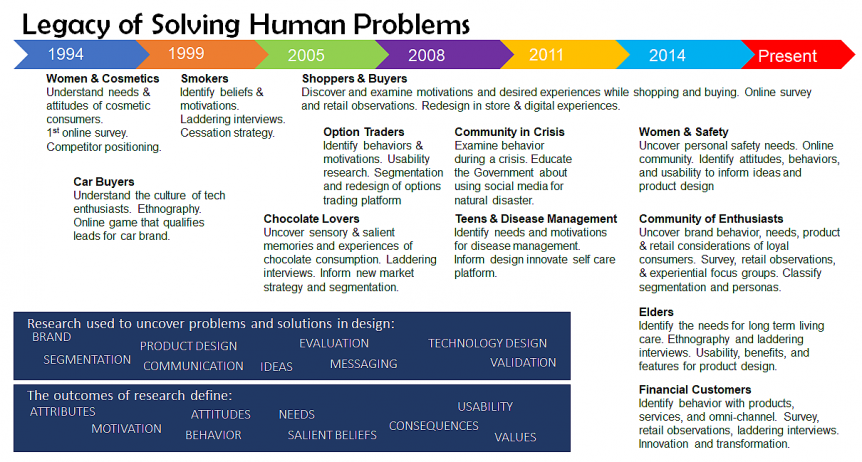I wore many hats in my career, but what I fell in love with is human research – specifically, I find people’s brand experiences fascinating. As a research generalist I get to uncover who, what, why, when, where and how. Of late, I took stock of what I’ve learned in the past two decades of working with businesses to articulate value and build relationships between their brands and consumers. My role throughout has been to learn about the consumer’s behavior and attitudes, uncover insights in the data, and then apply those insights to change the way businesses treat their consumers and more closely meet their desires and demands. Strong relationships between businesses and consumers create brand loyalty which in turn increases revenue for the business and satisfaction for everyone.
Thinking back to the first consumer research projects I conducted 24 years ago, I was intrigued by the segmentation, preferences, behavior, and attitudes. These data points informed the direction for digital strategies influencing experience, content, creative, design, and usability. This user behavior research provided the knowledge to form ideas to motivate consumers’ digital behaviors with the brand. [purchase.]
There was one early project that had more to offer and changed my perspective about quantitative research. The client, a well-known cosmetics brand, wanted to learn about consumer’s competitive preferences. The knowledge derived from the data discussed the cosmetic consumers’ brand preferences and revealed that they were favoring certain colors and product types over brands. Besides understanding the brand’s competitive positioning through the lens of the cosmetic consumer, the results showed that product attributes were far more important than brand loyalty. What was great about these discoveries is the objectives were met and the data revealed opportunities for exploration. This led me down a path of loving qualitative research. The attributes of the products were important to cosmetic aficionados suggesting easy access to their favorite products when they were in the store. This assumption could influence display and shelving and increase sales. The most popular products and colors should be placed at eye level on display, making shelving and space an opportunity to innovate and using this knowledge to adapt the brand website for consistency. These learnings shaped my curiosity and the use of research to help create a deeper relationship between the consumer and the brand and provide the business with evidence to support change. I was excited to see the effect that research had on informing brand and business decisions.
This experience left a lasting impression on me. The research was used as a guide to inform business decisions. The survey was tightly designed with only 10 questions mostly choice and 1 open-ended. Keeping in mind the technological design and implementation of the survey was far more involved twenty-four years ago. Today DIY research platforms give researchers creative flexibility to designing surveys.
My learnings from this experience sparked an important is the change in how the research plan is developed. Instead of the waterfall process to research, the agile research process has the potential of being more engaging and collaborative to all key stakeholders, and discoveries are implemented to the design along the way and tested for validity. My favorite part of the agile research process is the collaboration on the research instrument. Over two decades ago the process was siloed, exclusionary and a bit lonely. Waterfall research took longer from plan to analysis. Agile invites more perspectives. These perspectives shape the direction of the brand and business. When I design a research plan, I involve the stakeholders who can be leadership, designers, technologists, producers, engineers, industrial designers, architects, creative directors, design directors, inventors, innovators, analysts, planners, and strategists. The contributions from these cross-functional teams, help me understand what’s needed for the design of the brand’s creative, communications, and product.
Have you heard of the parable of the elephant? Here’s a twist to the story. Each of us has a perspective that can be uncovered through consumer research and insights. In this story the elephant represents the consumer, the cross-functional team represents the blind people each has a category need, the researcher brings both the consumer and cross-functional perspectives into focus, so that the brand and product be fully realized, and accepted by the consumer. During the research instrument design, the researcher ensures the objectives for the team are met, their questions about the design of product or communications are answered along the way by discovering, understanding, designing, testing, iterating, and validating.
Research has come a long way!

